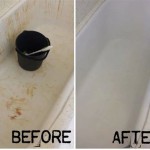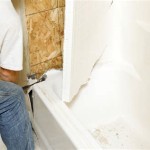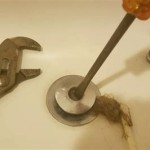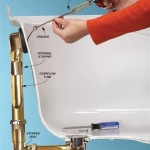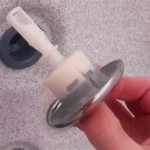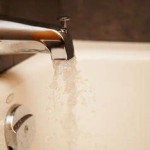```html
The Easiest Way To Clean A Bathtub
Maintaining a clean bathtub is essential for hygiene and overall bathroom aesthetics. Bathtubs can quickly accumulate soap scum, hard water stains, mildew, and other grime, making regular cleaning necessary. While various commercial cleaning products are available, many individuals prefer simpler, cost-effective, and less abrasive methods. This article outlines a straightforward approach to cleaning a bathtub using readily available household ingredients, focusing on efficiency and minimal effort.
Utilizing Vinegar and Baking Soda
Vinegar and baking soda are common household staples that possess excellent cleaning properties. The mild acidity of vinegar helps dissolve soap scum and hard water stains, while the abrasive nature of baking soda aids in scrubbing away grime. This combination provides a powerful yet gentle cleaning solution suitable for most bathtub surfaces.
The initial step involves rinsing the bathtub with warm water. This loosens surface dirt and prepares the area for cleaning. Ensure the water is not excessively hot, as it might damage certain bathtub finishes. A simple rinse removes loose debris and allows the cleaning solution to penetrate more effectively.
Next, evenly sprinkle baking soda over the entire surface of the bathtub. The amount of baking soda required depends on the size of the bathtub and the extent of the grime. A thin, consistent layer is generally sufficient. Pay particular attention to areas with visible stains or soap scum buildup.
Following the application of baking soda, spray white vinegar over the sprinkled surface. The vinegar will react with the baking soda, creating a fizzing action. This fizzing helps to further loosen dirt and grime. Allow the mixture to sit for at least 30 minutes. For heavily soiled bathtubs, extending the soaking time to several hours or even overnight may be beneficial.
After the soaking period, use a non-abrasive sponge or soft cloth to scrub the bathtub surface. The loosened grime should come away easily with minimal effort. For stubborn stains, apply a bit more baking soda directly to the sponge and scrub vigorously. Avoid using abrasive scrubbing pads or steel wool, as these can scratch or damage the bathtub's finish.
Once the entire bathtub has been scrubbed, rinse thoroughly with warm water. Ensure all traces of baking soda and vinegar are removed. Run the water until it flows clear and the bathtub surface is smooth and free from residue.
Finally, dry the bathtub with a clean towel. This prevents water spots and mildew growth. Regular drying after each use can significantly reduce the frequency and intensity of required cleaning.
Addressing Stubborn Stains and Mildew
While the vinegar and baking soda method is generally effective, some stains and mildew may require additional attention. Stubborn stains, such as rust or hard water deposits, often necessitate more targeted cleaning approaches. Mildew, a type of fungus that thrives in damp environments, can be particularly challenging to remove.
For rust stains, a paste of lemon juice and baking soda can be applied directly to the affected area. The citric acid in lemon juice acts as a natural bleaching agent and helps to dissolve the rust. Allow the paste to sit for 30 minutes to an hour before scrubbing and rinsing.
Hard water stains can be addressed with a stronger vinegar solution. Soak a cloth or paper towel in white vinegar and apply it directly to the stained area. Leave the cloth in place for several hours or overnight, allowing the vinegar to penetrate the mineral deposits. Rinse thoroughly with warm water and dry the surface.
To combat mildew, a solution of bleach and water can be used. However, it is crucial to exercise caution when working with bleach. Wear gloves and protective eyewear to avoid skin and eye irritation. Ensure adequate ventilation to prevent the inhalation of bleach fumes. Mix one part bleach with ten parts water and apply the solution to the affected areas. Allow it to sit for 10-15 minutes before scrubbing and rinsing thoroughly. It is vital to ensure the bleach is completely rinsed away to prevent any residual damage or discoloration to the bathtub surface. Always test the bleach solution on an inconspicuous area first to ensure it does not damage the finish.
Hydrogen peroxide is a gentler alternative to bleach for removing mildew. Apply 3% hydrogen peroxide directly to the mildewed areas and let it sit for 30 minutes to an hour. Scrub with a brush or sponge and rinse thoroughly. Hydrogen peroxide is less harsh than bleach and poses fewer safety concerns.
Preventative Measures and Maintenance
Preventative measures are crucial in minimizing the accumulation of grime and reducing the frequency of bathtub cleaning. Implementing simple habits can significantly extend the time between deep cleaning sessions and maintain the bathtub's cleanliness.
One of the most effective preventative measures is to rinse the bathtub after each use. This removes residual soap scum and prevents it from hardening on the surface. A quick rinse with warm water only takes a few seconds but can make a significant difference in the long run.
Proper ventilation is essential for preventing mildew growth. After showering or bathing, open a window or turn on the bathroom exhaust fan to allow moisture to escape. This reduces the humidity in the bathroom and inhibits the growth of mold and mildew.
Consider using a squeegee to wipe down the bathtub walls and door after each use. This removes excess water and prevents water spots and soap scum buildup. A squeegee is an inexpensive and effective tool for maintaining a clean bathtub surface.
Regular cleaning, even if it is just a quick wipe-down, can prevent grime from accumulating and becoming more difficult to remove. A weekly cleaning routine, incorporating the vinegar and baking soda method or a similar approach, can keep the bathtub consistently clean and hygienic.
Using liquid soap instead of bar soap can also help reduce soap scum buildup. Bar soap often contains talc and other ingredients that contribute to the formation of soap scum. Liquid soap is less likely to leave a residue on the bathtub surface.
Furthermore, inspecting and maintaining the bathtub's caulking is crucial. Cracks or gaps in the caulking can allow water to seep behind the tiles or bathtub, creating a breeding ground for mold and mildew. Regularly inspect the caulking and repair or replace it as needed to prevent water damage and microbial growth.
```
How To Clean A Bathtub Pro Housekeepers

This Tip Takes The Pain Out Of Cleaning Your Bathtub

How To Deep Clean A Bathtub Taskrabbit Blog

How To Clean Your Bathtub The Home Depot

Baking Soda Bleach And Vinegar Which Is Best For A Clean Bathtub 2025

This Tip Takes The Pain Out Of Cleaning Your Bathtub

The Best Way To Clean Your Shower And Tub

8 Easiest Ways To Clean Your Bathtub

How To Deep Clean A Bath Cleaning Tips The Home Depot

How To Clean A Bathtub Stains
Related Posts

